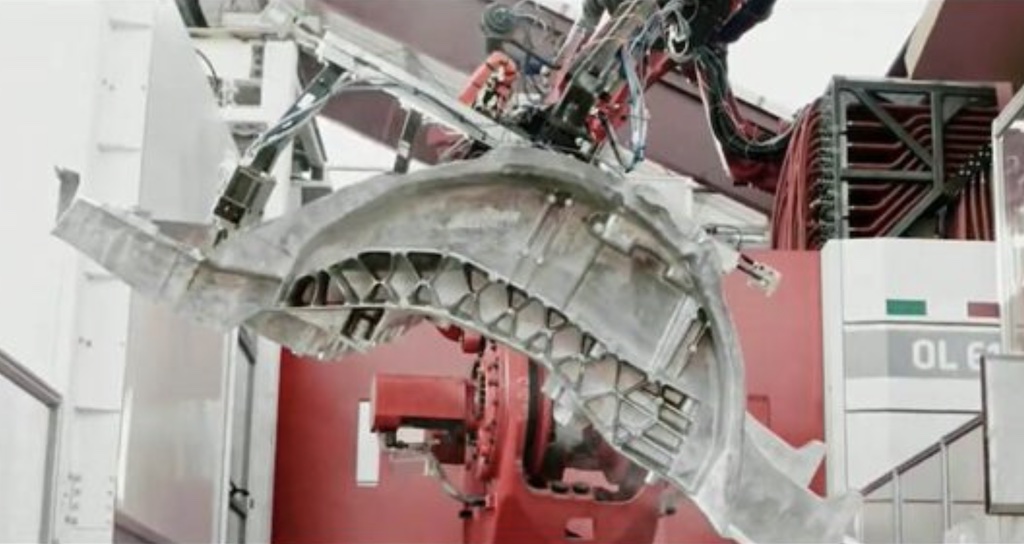This week, an exciting video has come to light that reveals a way of conceiving a car’s construction, which completely breaks the molds of a vehicle’s traditional production.
Tesla has not only revolutionized the automotive market by definitely accelerating the transition to zero-emission mobility. The launch of the S3XY range from the company led by Elon Musk demonstrates that the electric car can be fun to drive, fast, safe where it is available, allow long trips, and match or beat any car in the same segment equipped with internal combustion engine.
These adjectives or allusions to Tesla may annoy many people and readers since the American brand moves passions both for and against, offering heated debates on networks and forums, including FCE.
But the reality of 2021 in the automotive world would be very different if there had not been a determined and media bet like the one that Tesla has generated around itself. Their cars’ impact on the media and social networks has promoted electric mobility at a global level and popular culture like never before.
Nissan came before with the LEAF (for years the best-selling electric car), Renault proposed its Fluence and later with the ZOE, but it was Tesla that indeed created a new sensation that penetrated the collective imagination and raised the production of electric cars to figures in the hundreds of thousands annually.
From that moment on, zero-emissions mobility became something of a fashion, trending, and even ‘sexy,’ a word that Musk used and tried to emulate with the name of the cars that make up the current Tesla range.
Tesla (NASDAQ: TSLA) is today the world’s most highly valued car company on the stock market despite its production being a drop in the ocean of sales with a number in the tens of millions of cars that emit hundreds of thousands of tons of CO2 and NOx from the moment their owners remove them from dealerships around the world.
Volkswagen or Toyota make more than 10 million vehicles a year compared to the half a million that Tesla managed to deliver last year. Despite these figures, the market has given the North American electric car manufacturer a capitalization that includes, by value, the two groups mentioned and several other automobile giants.
If Tesla has challenged the industry by making possible an electric car that traditional builders said was too soon for the market, impossible to make a reality and for which they claimed there was no demand, now the American builder raises the bet on the land where the old industry had an advantage; pure and hard manufacturing.
During the last Battery Day, Elon Musk explained the brand’s new productive approach, inspired by how plastic toys are made. One-shot part printing is Musk’s first step toward realizing his dream of creating the machine that makes the machine.
The Giga Press that the North American electric car manufacturer is using are not new, nor were they invented by Tesla. They have done the maximization of these solutions by creating the world’s largest machine of its kind, developed with Italian technology under the Americans’ specifications.
These die-cast printing machines have been built by IDRA, an Italian company based in Brescia, and can produce the entire rear of a Tesla Model Y at one time, in one piece and, as seen in the video (minute 5:20), in less than a minute.
This process reduces the dozens of parts required for the entire subsequent structure. The latest images from a drone and the machines that are being assembled while these words are being written at the Berlin Giga ‘fuse’ the entire rear frame of the electric SUV in one go.
These sophisticated machines will be able to make 40 to 45 complete cast iron parts per hour. With this capacity, it can be estimated that it can reach around a thousand pieces a day. What is truly admirable about all this is that each piece is a complete part of the vehicle’s structure.
For example, at Fremont, the first Giga Press used by Tesla made the rear of the Model Y in two pieces that were later joined. This process has been further reduced, obtaining in seconds a single piece that saves multiple welds, pieces, robots, and complex production processes to make the same piece through traditional processes.
The goal to be achieved in the heart of Germany with Tesla Giga Berlin is to build a Model Y that will have the front and rear frames built from two large function pieces joined by a structural battery, greatly simplifying the whole structure of the car and the production processes to the maximum.
These mega-machines are currently being installed at the Texas Giga as well. With this step, Tesla not only remains a benchmark and at the forefront of batteries and software. IDRA machines can also place you at the forefront of production systems.
As they curl the curl, they would only need to perfect the quality controls in their production lines to obtain a product free of criticism. Fortunately, Tesla is also working in this sector with the implementation of a camera system to verify each vehicle’s quality in real-time.

